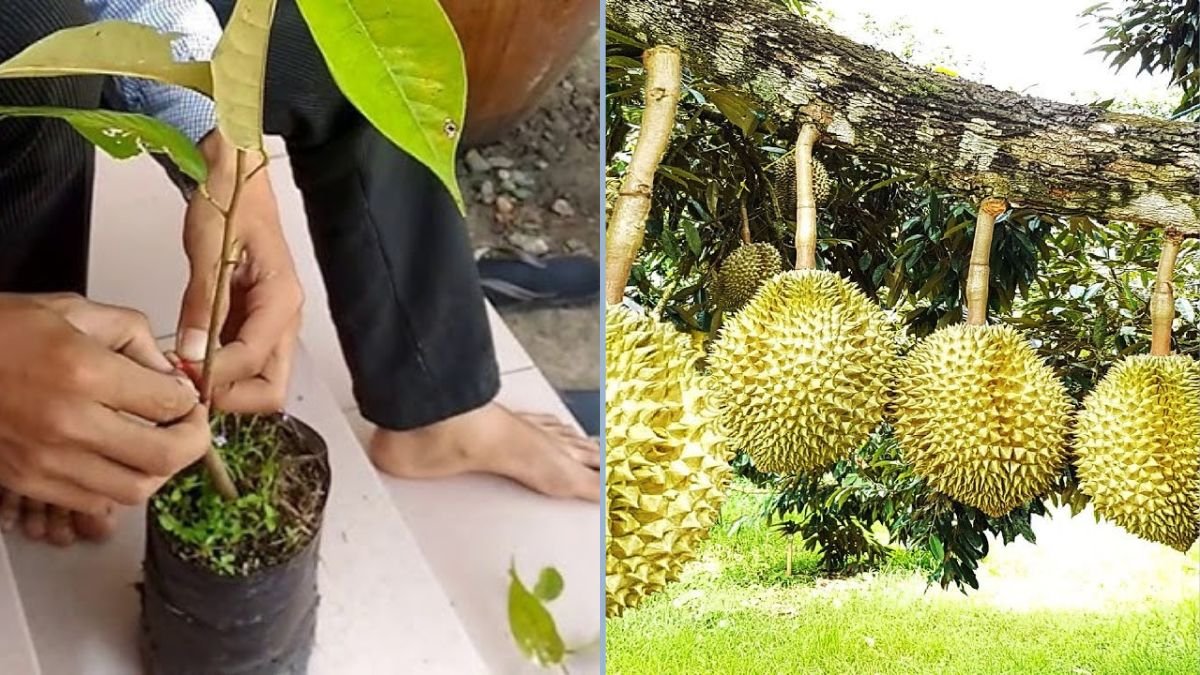Durian (Durio zibethinus), often hailed as the “King of Fruits,” is highly prized for its distinctive flavor, creamy texture, and impressive size. Traditionally, durian trees are propagated by seeds or grafting, but recent horticultural advances have highlighted a unique method: propagating durian trees by stalk cuttings. This technique offers a high success rate, faster establishment, and ensures the desired fruit characteristics of the parent tree.
In this guide, we’ll explore the step-by-step process of propagating durian trees using stalk cuttings, share practical tips for success, and discuss long-term care to ensure healthy, productive trees.
Why Propagate Durian Trees by Stalk Cuttings?
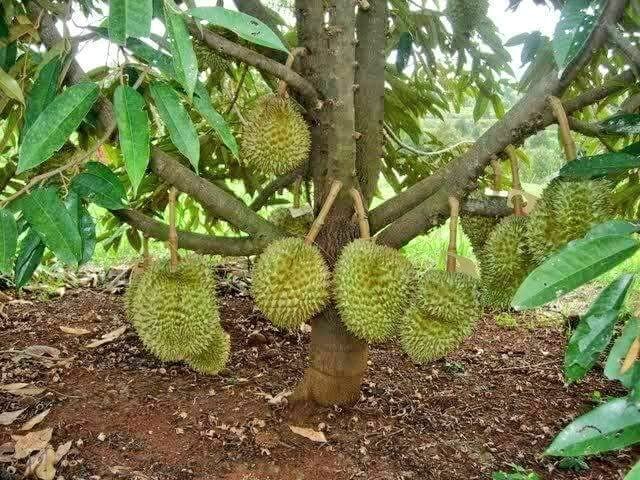
Propagating durian trees via stalk cuttings offers several advantages over traditional methods:
- 100% true-to-type reproduction: Cuttings preserve the exact characteristics of the parent tree, including fruit quality, size, and flavor.
- Faster fruiting: Cuttings produce fruit earlier than seed-grown trees, typically within 3–5 years.
- High survival rate: When done correctly, this method significantly reduces the risk of grafting failure or seed variability.
- Sustainable propagation: Allows small-scale and commercial farmers to multiply superior durian varieties efficiently.
- Space-saving: Can be started in pots or nurseries before transplanting to the field.
This technique is particularly beneficial for farmers who want to maintain premium durian cultivars or propagate trees in areas with limited nursery resources.
Step 1: Selecting the Parent Tree
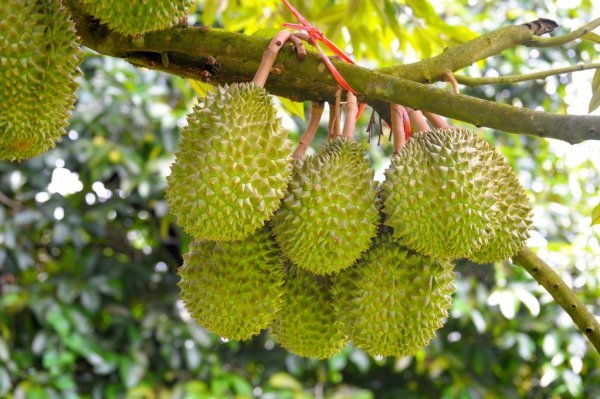
The success of propagation begins with choosing a healthy parent tree:
- Mature tree: Select a vigorous, disease-free durian tree that consistently produces high-quality fruits.
- Healthy branches: Choose branches with well-developed stalks (petioles) that are free of pests or disease.
- Optimal age: Branches should be semi-hardwood, neither too young nor overly mature, to ensure rapid rooting.
Careful selection ensures that the cuttings inherit the best traits of the parent tree and improves overall survival rates.
Step 2: Preparing the Stalk Cuttings
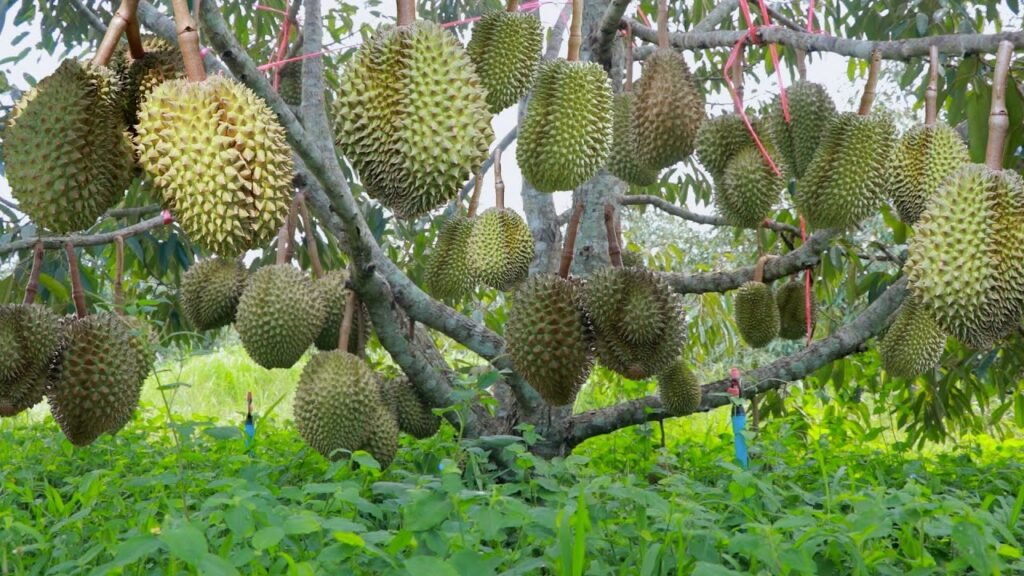
Once the parent tree is selected, the next step is preparing the cuttings:
- Choose the right length: Cut sections of the stalk about 20–30 cm long, each with at least 2–3 nodes.
- Trim leaves: Remove most of the leaves, leaving only a few at the top to reduce water loss.
- Make clean cuts: Use sterilized pruning shears to prevent infection and ensure smooth cuts.
- Optional rooting hormone: Dip the cut end in a rooting hormone powder or solution to stimulate root formation.
Proper preparation of the cuttings is crucial to achieving high success rates.
Step 3: Selecting the Growing Medium
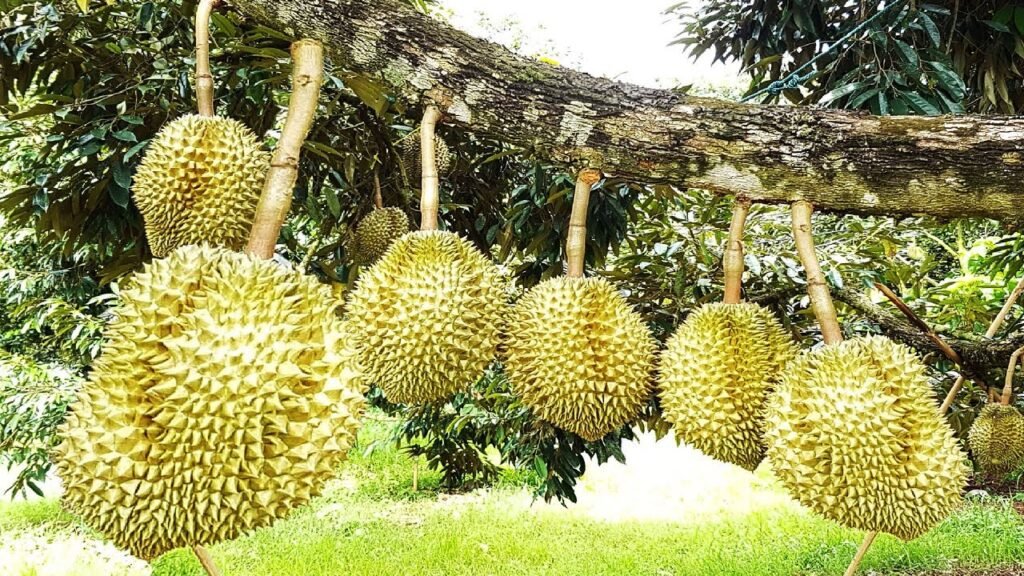
Durian cuttings require a well-draining, nutrient-rich medium to encourage rooting:
- Common media: A mix of sand, perlite, and peat moss works well.
- Soil moisture: Keep the medium moist but not waterlogged to prevent rot.
- Sanitation: Ensure the medium is clean and free from pathogens.
Plastic pots or nursery trays are ideal for controlling moisture and light conditions during the rooting process.
Step 4: Planting the Cuttings
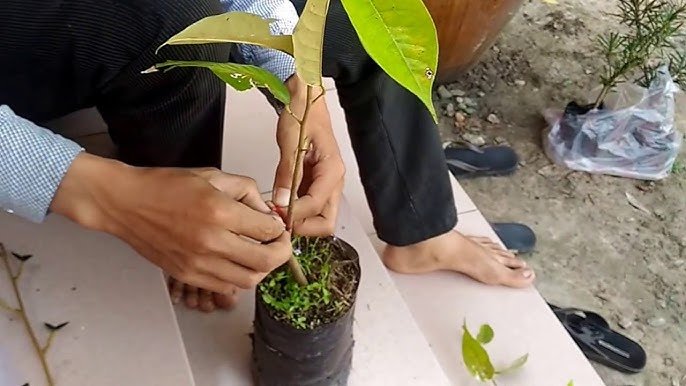
Planting the stalk cuttings correctly is essential for successful rooting:
- Make a hole: Prepare a small hole in the medium for each cutting.
- Insert the cutting: Place the stalk vertically or slightly angled, ensuring at least one node is buried.
- Firm the medium: Gently press the soil around the cutting to provide stability.
- Water lightly: Mist the cuttings or water gently to settle the soil without causing erosion.
Proper planting ensures stability and promotes root formation in the cuttings.
Step 5: Creating Optimal Conditions for Rooting
Cuttings require specific environmental conditions to establish roots successfully:
Temperature and Humidity
- Maintain warm temperatures between 25–30°C (77–86°F).
- High humidity encourages rooting; use a plastic bag or mini-greenhouse to cover the cuttings.
Light
- Provide indirect sunlight. Too much direct sun can dry out the cuttings, while too little light slows growth.
Watering
- Keep the medium consistently moist but not waterlogged.
- Mist daily if humidity is low to prevent leaf desiccation.
Creating the right environment ensures rapid root development and reduces the risk of cutting failure.
Step 6: Monitoring Root Development
Root formation typically occurs within 4–8 weeks, depending on environmental conditions and cutting quality. Signs of successful rooting include:
- New growth: Emergence of new leaves or buds at the top of the cutting.
- Firm anchoring: Gently tugging the cutting should show resistance, indicating root formation.
- Healthy appearance: Leaves should remain green without wilting or yellowing.
Patience is key, as rushing this stage may damage young roots.
Step 7: Transplanting Rooted Cuttings
Once cuttings develop a healthy root system, they are ready for transplanting:
Step-by-Step Transplanting
- Choose a pot or site: Use a large pot or a prepared field with well-draining soil and full sun.
- Prepare the soil: Enrich with compost or organic matter to provide nutrients.
- Handle gently: Carefully remove the cutting from the medium, preserving roots.
- Plant: Place the cutting at the same depth as in the nursery and firm the soil around it.
- Water: Water immediately to settle the soil and reduce transplant shock.
Transplanting at the right stage ensures faster establishment and minimizes stress.
Step 8: Caring for Young Durian Trees
Young durian trees require consistent care to grow into strong, productive trees:
Watering
- Water regularly, especially during dry spells, to support root and leaf development.
- Avoid waterlogging to prevent root rot.
Fertilization
- Apply organic fertilizers or well-composted manure every 2–3 months.
- Balanced NPK fertilizers can be used to stimulate growth.
Pruning
- Remove damaged or weak branches to encourage strong structural growth.
- Maintain a central leader for better canopy formation.
Pest and Disease Management
- Monitor for aphids, mealybugs, and fungal infections.
- Use organic or chemical controls as necessary.
Proper care during the early years lays the foundation for healthy, high-yielding trees.
Step 9: Fruiting and Harvesting
Durian trees propagated by stalk cuttings generally fruit faster than seed-grown trees:
- Time to fruiting: 3–5 years after propagation, depending on variety and care.
- Flowering: Trees produce small, yellow-green flowers that develop into fruits.
- Fruit development: Fruits mature in 3–5 months, depending on climate.
- Harvesting: Fruits are ready when the spiky skin turns slightly brown and emits a strong aroma.
Following proper care and maintenance ensures high-quality fruit and consistent yields.
Tips for 100% Success in Durian Propagation
- Select healthy, vigorous parent trees for cuttings.
- Use sterilized tools and clean growing media to prevent disease.
- Apply rooting hormones to stimulate faster root formation.
- Maintain high humidity and proper temperature for cuttings.
- Monitor cuttings regularly for signs of stress or disease.
- Transplant only after cuttings have developed a strong root system.
- Provide consistent watering, fertilization, and pruning to young trees.
By following these steps carefully, propagation by stalk cuttings can achieve nearly 100% success.
Conclusion
Propagating durian trees by stalk cuttings is a revolutionary technique that allows farmers and gardeners to reproduce high-quality, true-to-type trees with remarkable success. This method accelerates fruiting, ensures desirable traits, and provides a reliable alternative to traditional seed propagation or grafting.
With proper selection of parent trees, meticulous preparation of cuttings, optimal growing conditions, and attentive care, anyone can master this unique skill. Whether for personal consumption or commercial farming, propagation by stalk cuttings provides a sustainable, efficient way to cultivate one of the most prized tropical fruits in the world.
By implementing these steps, you can enjoy healthy durian trees, high yields, and the satisfaction of growing the “King of Fruits” from scratch—all from a simple stalk cutting.
